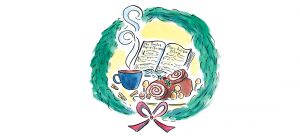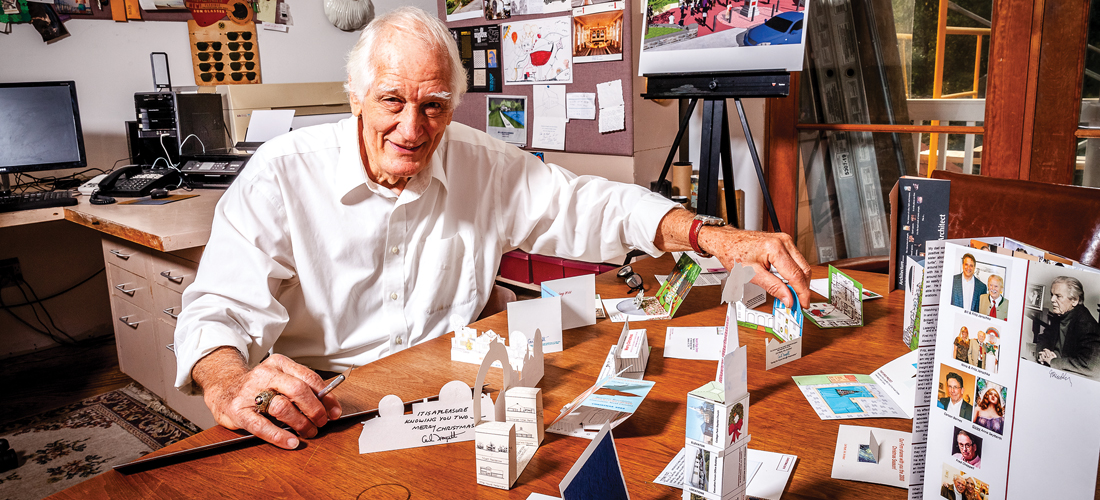
Folding Architecture into Christmas
Greensboro’s Carl Myatt models good cheer
By Maria Johnson • Photographs by John Gessner
Jane Levy starts watching in late November for the distinctive Christmas card from her friend, architect Carl Myatt.
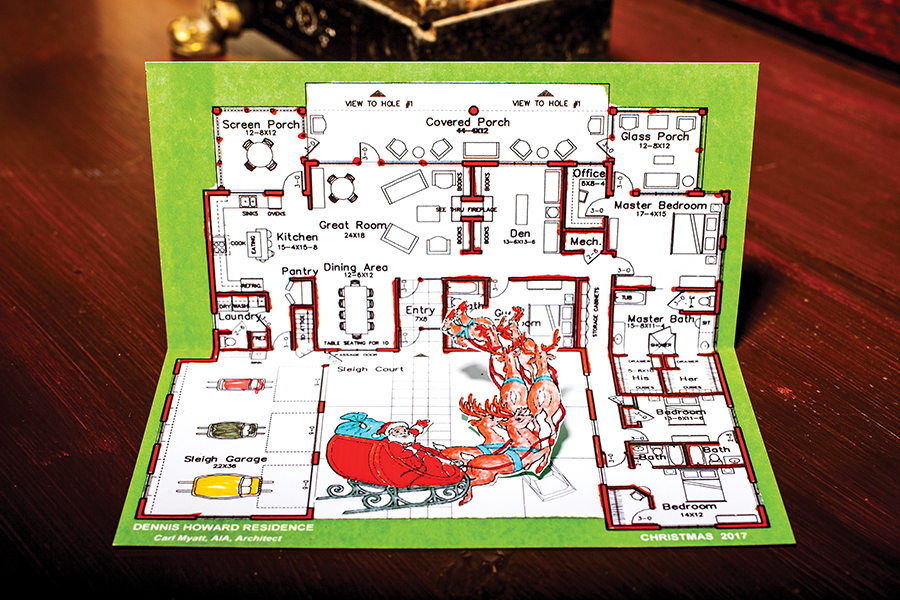
It always seems as if Levy’s out running errands when Myatt personally delivers the card, so he props the block-lettered envelope against her door, and Levy sees it when she gets home.
“The ritual is, I drop everything and open up this little toy miniature,” she says. “I don’t get very far. Honestly, I don’t think I even sit down. I just go to the sideboard and have at it.” Myatt’s pop-up greetings — renderings of buildings that he has designed — require some assembly.
Spatially challenged? He includes step-by-step instructions.
Pitch, fold, tuck, and behold: An enchanting blend of merriment and marketing.
“These little contraptions contain an oversized spirit,” says Levy. “They bring such joy.”
Levy understands the emotional power of structures; her father was the late Greensboro Modernist architect Ed Loewenstein, whose sleek residential and commercial designs elicit smiles to this day.
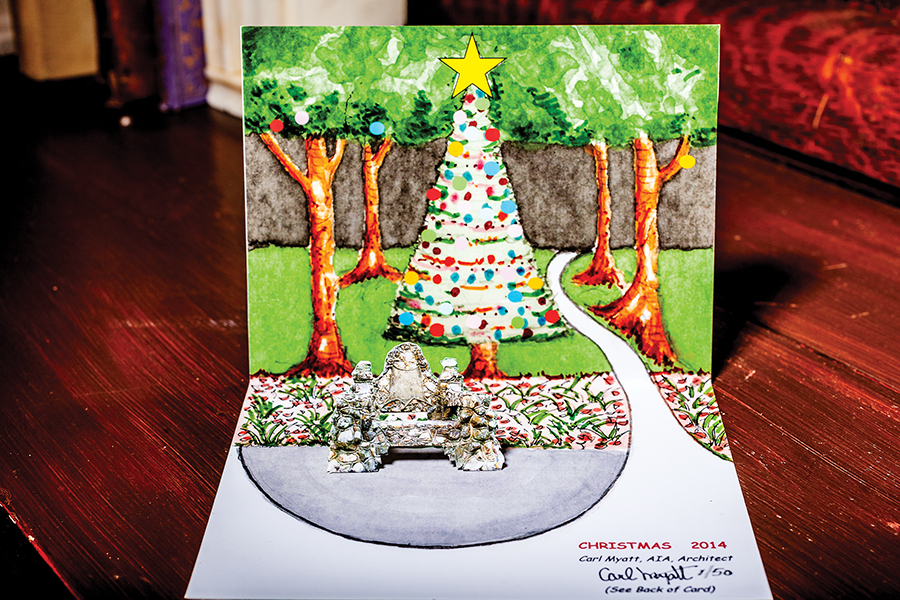
Myatt and Lowenstein never worked together, but Myatt has done projects for friends of Levy, and she admires his deft touch. She keeps his cards and displays them in the foyer of her home every holiday season. She doesn’t celebrate Christmas, but she delights in Myatt’s labor of love.
“I think it’s a joyful way for him to express himself to everyone,” she says.
Her visitors agree. They love to pick up and study the card-stock creations. Like dollhouses, some of the models contain interior rooms that coax viewers to peek through openings.
“They invite participation,” Levy says.
Myatt, who grew up celebrating Christmas in the Baptist church in Houston, Mississippi, started his card tradition with more “hum” than “ho.”
He sent a store-bought card in 1992. Two years later, he issued a Christmas letter of sorts, complete with a list of recent clients. In 1997, he turned out a three-dimensional arch covered with drawings of his recent projects. He saw it as a way to honor his clients — and to advertise to prospective customers.
From then on, his stand-up salutations were standard. They leaned on Myatt’s ability to make three-dimensional models, a specialty of architects.
“We do it all the time, so why not?” he says.
Every year, he mulls which of his projects can be shrunken, flattened to fit into an envelope and reconstituted by non-architects.
Occasionally, he opts for a simple trifold card that stands on edge.
But several of his cards require spatial skills to build.
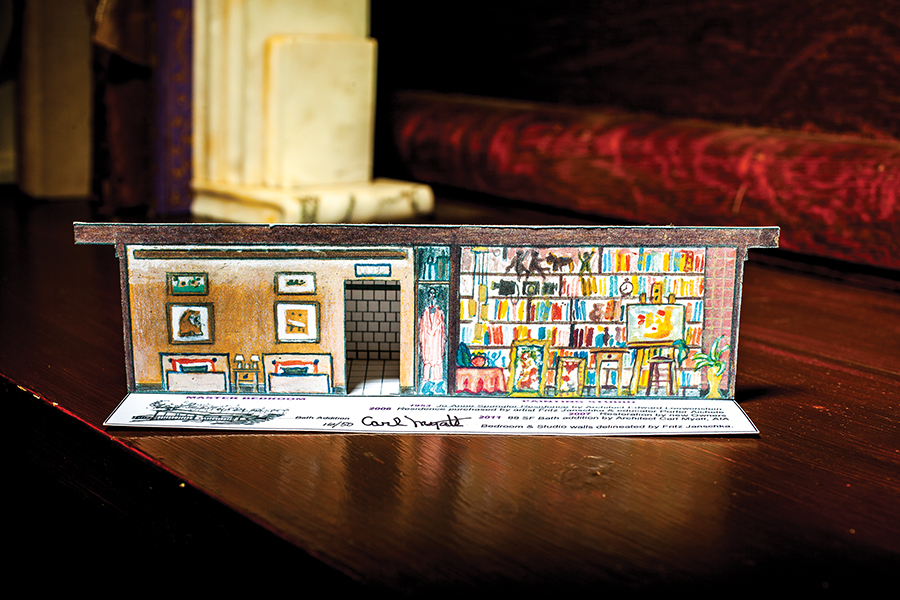
To make them easier, Myatt — who works in the top-floor studio of a Fisher Park home he designed — spends untold hours drawing, cutting and folding prototypes. His color printer guzzles ink during trial runs. His models require no glue or staples, though he once enclosed two straight pins to secure a roof.
He sweats the choice of envelopes and stamps, too. He addresses each envelope — more than 200 last year — by hand.
“It’s like a project,” says Myatt. “When it’s finished, everybody says that looks simple, but it’s not simple.”
The reward, he says, is imagining his friends and clients opening and building his glad tidings.
“I can see their smiles,” he says, as a sympathetic grin lights up his face. “Architects are visualizers.” OH




